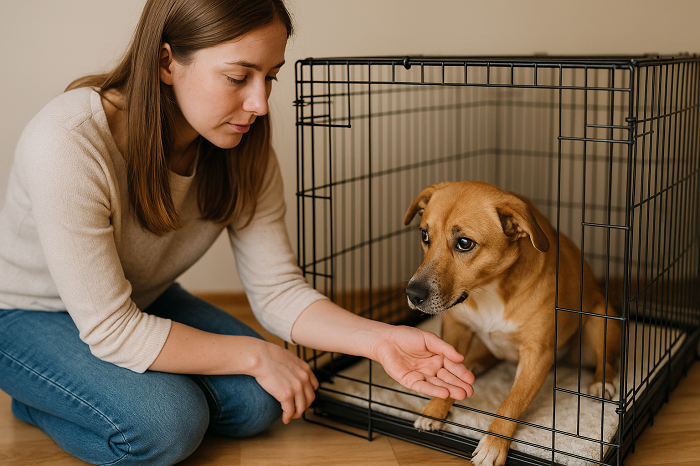
🐶 Full Article: How to Crate Train a Rescue Dog with Trust and Patience
Crate training a rescue dog is different from training a puppy. Rescue dogs often come with a history — sometimes painful, uncertain, or filled with trauma. That’s why it takes more patience, compassion, and a slower approach.
But here’s the truth: with gentle guidance, a crate can become a place of safety and healing.
🧠 Understand the Mindset of a Rescue Dog
Many rescue dogs:
- Have lived in loud shelters
- May associate crates with punishment
- Struggle with anxiety or fear
- Need more time to adjust
So the key here is to move slow and build trust first, not obedience.
🛠️ Step-by-Step Crate Training for Rescue Dogs
1. Let the Dog Explore the Crate Freely
No pressure. No force.
Leave the door open and place the crate in a calm area. Let them sniff and observe on their own terms.
2. Make the Crate Feel Safe
Use soft blankets, a piece of your clothing, and low lighting nearby. Add calming scents like lavender spray or an anxiety wrap.
✨ Make it feel more like a nest than a cage.
3. Use Food as Positive Association
Feed them treats near the crate → then just inside the entrance → then fully inside. Let the crate = rewards, every time.
4. Close the Door Only When Ready
Once your dog goes in willingly, gently close the door for a few seconds — while you stay visible. Gradually increase time over days/weeks.
5. Keep It Calm and Predictable
Avoid sudden noises near the crate. Keep visitors/kids away when the dog is adjusting.
Routine = safety. Be consistent with crate time (e.g., during naps or meals).
6. Never Use the Crate as Punishment
If your rescue dog links the crate with anger or fear — they may never trust it again. Always associate the crate with rest, not rejection.
7. Be Ready to Adjust
Some dogs may do better with open playpens or safe gated areas before transitioning to crates. And that’s okay.
🐾 Realistic Timeline
Crate training a rescue dog may take:
- A few weeks for calmer dogs
- 1–3 months for dogs with trauma
- Even longer for dogs with deep fear
But when done right, your dog will walk into their crate voluntarily — because it feels like home.
❤️ Final Thoughts
Crate training a rescue dog is not about control — it’s about creating comfort, security, and emotional healing. With patience, rewards, and compassion, even the most nervous dogs can learn to love their crate.
You’re not just training — you’re rebuilding trust, one paw at a time.
